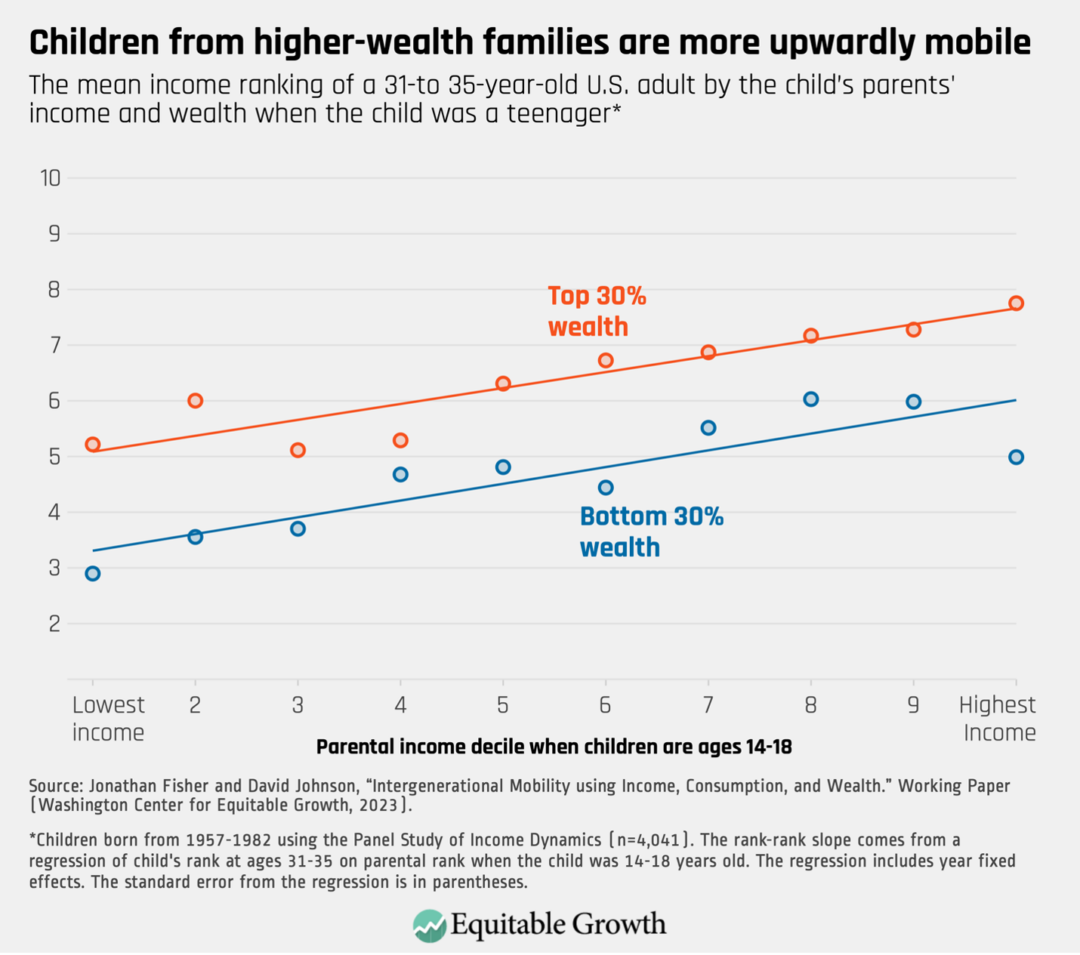New recommendations for an integrated system of U.S. inequality statistics chart a bold path forward

A new report from the National Academy of Science’s Committee on National Statistics is packed with recommendations for building an integrated system of national statistics that can provide accurate and timely measurement of the distribution of income, consumption, and wealth in the United States. Implementing this report’s recommendations would supercharge policymakers’ understanding of U.S. inequality and provide them with critical economic intelligence for steering the U.S. economy.
There’s not nearly enough room here to provide a summary of all the panel’s findings, but this column provides some context on the importance of this report and its proposals, while summarizing a few of the panel’s findings. It also briefly touches upon areas for future research that can support the goal of a federal system of integrated income, wealth, and consumption data.
The importance of a unified system of income, consumption, and wealth data
Why have a unified system of income, consumption, and wealth statistics? First, because each of these metrics tells a different story about how U.S. households are faring.
Just as importantly, in the context of an integrated set of statistics, these three metrics are related to one another by the so-called budget identity of “income = consumption + change in wealth.” That is, the amount households consume, plus the amount they save (which is their change in wealth) must add up to their incomes each year.
This identity is fundamental to understanding household well-being in the United States. If, for example, we look only at consumption data, then a household that spends $60,000 in a year might seem to be doing well. But if that consumption was financed by only $40,000 in income, then it dramatically changes our view of that household’s well-being. They must either have existing wealth to fund this deficit or else are incurring debts that may lead to reduced well-being in the future.
These considerations are what motivated recent Equitable Growth-funded research by Jonathan Fisher (now an economist at the U.S. Census Bureau) and David Johnson (who led the Committee on National Statistics study) into economic mobility across income, wealth, and consumption. That research unearthed important findings that are only apparent when all three metrics can be observed.
Fisher and Johnson find that children of wealthier parents are more upwardly mobile than less wealthy peers in the same income bracket. A child born to parents who are in the bottom 30 percent of wealth and the fifth decile of income, for example, will, on average, reach the 48th percentile of income by the time they are between the ages of 31 and 35 years old. If, however, that same child’s parents are instead in the top 30 percent of the wealth distribution, then the child can expect to reach the 63rd percentile of income—a difference of 15 percentiles. (See Figure 1.)
Figure 1

This finding adds useful context to previous economic mobility research, such as the findings from Harvard University’s Raj Chetty and his co-authors that the proportion of U.S. children who earn more than their parents has fallen from 90 percent for children born in 1940 to 50 percent for children born in 1980. This finding examines only the income of parents and children, while an integrated system of statistics, with distributions of income, wealth, and consumption, would greatly expand our understanding of economic inequality and mobility in the United States by allowing researchers to tap all three areas of financial well-being rather than looking at each separately.
A guide and a research agenda
The new study from the Committee on National Statistics provides a useful guide for federal statistical agencies to modernize and integrate how they measure these three important concepts. To understand the current state of the federal statistical system in relation to these concepts, this might be the best single place to start because the report is replete with tables that provide detailed guides to the types and quality of data available in the federal statistical system.
The report’s recommendations are similarly comprehensive. It urges federal statistical agencies to focus on data features that have been particularly in demand among researchers since the beginning of the COVID-19 pandemic in early 2020, such as estimates for small geographic areas, estimates for various demographic groups, and data that are released on a consistent and timely basis. The recommendations also suggest pathways for improving current distributional products, including the U.S. Bureau of Labor Statistics’ Distribution of Personal Consumption Expenditures, the U.S. Bureau of Economic Analysis’ Distribution of Personal Income, and the Census Bureau’s new National Experimental Wellbeing Statistics.
Chapter 5 of the Committee on National Statistics report will be of particular interest to academic economists. The chapter digs in on the methods and options for creating an integrated system of statistics that conforms to the committee’s recommendations in prior chapters. There are several technical challenges that require more research, including linking methods, imputation, and alignment with national accounts concepts and the budget constraint.
The report calls for pilot studies to investigate some of these challenges. On page 5–26, for instance, the panel suggests various pilot studies, including on: “expanding [the National Experimental Wellbeing Statistics] to include in-kind transfer programs, health benefits, income taxes, and capital gains;” [using] “commercial data to improve consumer expenditure data in the CE survey;” or [comparisons] “of the consumption (or spending) estimates using the budget identity.” Researchers with access to Census Bureau Research Data Centers can contribute to this effort.
The Committee on National Statistics also expresses an interest in an experimental public-domain system of statistics created using publicly available data that could be investigated by researchers. Such a dataset could serve as a bridge to a more comprehensive dataset based on administrative data. It could also be a testing ground for data-linkage techniques that would be useful in the construction of the more comprehensive dataset.
Conclusion
Implementing the report’s recommendations will, of course, require resources. Yet federal statistical agencies are perennially under resourced. And when federal budgeting turns contractionary, as it recently has, statistical agencies are often casualties.
That’s a mistake. Federal statistics are a critical resource for the U.S. economy that costs relatively little. Gaps in the federal statistical system caused by insufficient resources hinder national policy priorities. It’s difficult to monitor the development of a national semiconductor industry, for example, when the U.S. Department of Commerce and the U.S. Department of Labor disagree about how many semiconductor manufacturing workers and establishments there are in the country.
The Committee on National Statistics’ new report is a valuable roadmap to developing statistics that will give us a better understanding the distribution of resources in the United States—if policymakers can muster the will to follow it and fund the agencies that will carry it out. Developing an integrated system of income, consumption, and wealth data will open a wealth of possibilities for researchers seeking to understand policy and household well-being, and will guide policymakers as they work to address the inequalities pervasive throughout the U.S. economy.
Did you find this content informative and engaging?
Get updates and stay in tune with U.S. economic inequality and growth!






